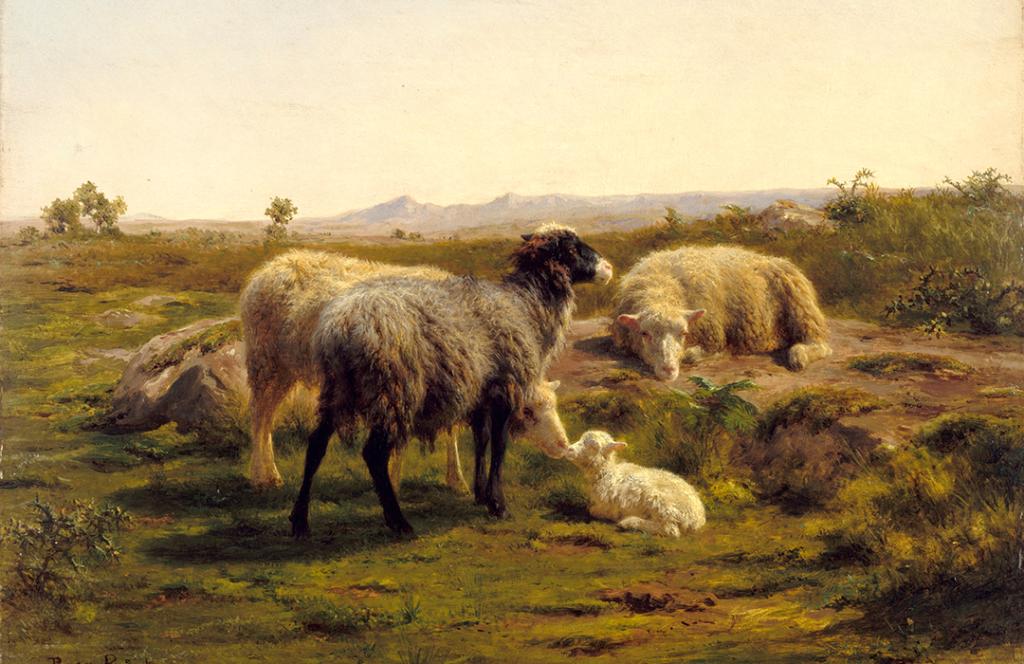
The life of Rosa Bonheur
Alex Patterson looks at the fascinating life of Rosa Bonheur.

As part of LGBT+ History Month, I’m delighted to celebrate the life and work of Rosa Bonheur (1822-1899). Bonheur was one of the most celebrated artists in France in the 19th century. Sudley House has three wonderful examples of their renowned animal paintings, and the Walker has a superb sculpture. Bonheur was born a woman and throughout their adult life had committed relationships with women. They were famous for their male style of dress and adoption of masculine character traits, positioning themselves in a traditionally male role professionally and romantically. Their story is therefore significant for women’s, lesbian and trans histories. Now hailed as a feminist, their international success helped pave the way for women artists across the world to take up work as respected professionals.
In their relationships, Bonheur referred to themselves as ‘the husband’ and assumed the traditionally male role of ‘breadwinner’. It is clear that they understood their relationships with their consecutive, long-term partners (Nathalie Micas and Anna Klumpke) to be a form of matrimony. Bonheur is sometimes cited as ‘the first lesbian artist’. Today, Bonheur may have identified as a lesbian. Bonheur was also someone who defied gender conventions for the time and saw themselves as occupying a masculine role, so it is also possible that Bonheur may have understood themselves to be trans, non-binary, or genderqueer.
Bonheur’s father, Raymond (1796-1849), was a social-reformist painter and art teacher active in the Saint-Simonist movement. The movement fought for the equality of women and questioned traditional gender roles. Rosa Bonheur strived to live a life that did not distinguish so clearly between genders. They established themselves as a proactive and financially independent artist who smoked, wore men’s clothes, hunted and drove.

Bonheur often visited slaughterhouses and livestock markets which provided subjects for anatomical and life studies. Their direct observation of nature can be seen in the texture of the horse and donkey coats in the painting Le Retour du Moulin. It is also shown in the sculpture Recumbent Ewe. Bonheur learned to cast in their father's workshop, where they served as his apprentice. Sculpture was, in Bonheur’s day, regarded as the least ladylike of all art forms. They worked in a loose smock, men’s velvet trousers and heavy boots. At the time it was illegal for women to wear men’s clothes in public and Bonheur had to obtain a written permit from the Prefect of Police to cross-dress in 1857. Their style was also part of their own subversive feminist identity. Bonheur’s distinctive look has been credited with helping to shape the androgynous lesbian visual identity of the early 20th century.
The conservative style and subject matter of Bonheur’s work is often contrasted with their unconventional lifestyle. Their focus on animals rather than social concerns, meant that it was easily accepted by the establishment and had broad appeal to a middle-class audience. In 1865, Bonheur was awarded the Grand Cross by the French Legion of Honour and was recognised as the first woman to achieve this.

Bonheur’s representations of animals as icons of freedom has also been interpreted as their desire to be free from the restraints of male domination and social conventions. The painting Sheep and Lamb show the animals in a wild, unfarmed landscape, signalling Bonheur's own desire for greater liberty and freedom.
Man and Dead Horse is unusual for its sombre mood. It has been suggested that the painting could symbolise either Bonheur's grief over the recent death of their father Raymond or their long-term sorrow over the premature death of their mother, Sophie. Bonheur never forgot the extreme sacrifice their mother made to raise her children and allow Raymond to pursue his reformist ideas. Sophie was a gifted musician and piano teacher. She died in 1833 at the age of 36, from illness aggravated by the exhaustion of almost single-handedly raising four young children. Bonheur thought of her as a ‘guardian angel’. However, they were also determined to learn from their mother’s demise and forge a different path. They determined never to marry a man so that they could retain control of their own life and affairs.

The financial and professional status Bonheur gained as an artist also enabled them to challenge the dominant female image of their time by taking control of their own affairs. Bonheur also continued the Saint-Simonian fight to abolish the Napoleonic Code’s sections on inheritance, which prevented women from inheriting property. They used their last will and testament to force a change in the law and give them the right to transfer their property to a woman — Anna Klumpke. Rosa referred to the American painter as their ‘wife’, living with them until their death in 1899.
